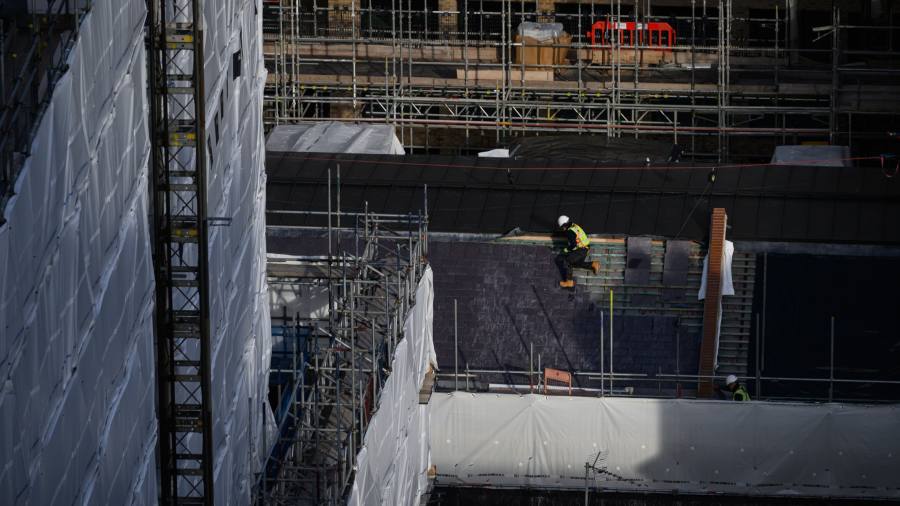[ad_1]
Construction companies in the UK are charging the highest rates for commercial building work in more than two decades as a result of soaring labour, material and energy costs, according to Aecom.
The consultancy’s UK tender price index, which tracks the prices that construction groups charge to deliver building projects, rose at an annual rate of 10.7 per cent in the last quarter of 2022, the fastest since 1998.
The price of delivering a typical new central London commercial office rose to about £440 per square foot, roughly triple the 1998 rate of £130-£150.
The cost increases came despite an uptick in demand, with construction output 4.1 per cent higher in October than before the pandemic in January 2020.
However, Aecom warned that many contractors already had weakened balance sheets and could not pass on the full increases in material costs to customers because contracts had been agreed, raising the likelihood of further bankruptcies over the coming year.
“Construction company insolvencies, which were at a historic low in 2020 due to government support, in 2022 approached levels not seen since the financial crisis,” said Brian Smith, Aecom’s head of cost management for the UK and Ireland. “They are expected to continue to rise in 2023, most likely as a result of shouldering inflationary risk under fixed-price delivery agreements.”
Construction companies in the UK went out of business at the highest rate in a decade last year, according to the Department for Business, Energy and Industrial Strategy, with a total of 4,039 registered as insolvent in the year to October.
Noble Francis, economics director of the Construction Products Association, said the combination of rising demand and insolvencies was a “worrying trend”.
“If insolvencies are already at a high when their services are wanted, what happens when demand slows over the next 12-18 months as the UK is in recession?” he added.
Taylor Wimpey, Persimmon and Redrow, three of the biggest housebuilders, have said they will cut back on new projects in a sign that construction is likely to slow.
The CPA is forecasting a 3.9 per cent fall in construction output this year, with particularly large drops in commercial and local authority demand, housebuilding and home improvements.
Overall, construction materials prices were 15.5 per cent higher in October than a year ago. While down from a peak of 26.8 per cent in June amid the fallout of Russia’s invasion of Ukraine it remains extremely high by historical standards and is a huge cause of concern for contractors, especially those on fixed-price contracts.
The cost of energy-intensive materials such as aggregates and insulation rose by more than 50 per cent in the year while precast concrete, doors, windows and paint were all up by about a fifth in the 12 months to October, according to BEIS data. Materials prices overall are still 44.4 per cent higher than before the pandemic.
Insolvencies were highest among specialist contractors, largely because they had fixed-price contracts signed more than a year ago, before the sharp spike in energy and material costs.
Rising labour costs and shortages, IR35 tax changes, the removal of the red diesel rebate and rising personal indemnity insurance costs have also affected profitability.
Just 6 per cent of the construction companies that have gone out of business were civil engineering firms, which remained buoyed by major projects including the HS2 rail line and the Thames Tideway sewer.
Last year was the highest on record for infrastructure work and there continued to be high demand for civil engineers this year.
Francis said regulated utilities such as water and energy companies as well as public sector clients tended to be more understanding of the issues around cost inflation and less stringent on enforcing fixed-price contracts on smaller specialist contractors.
[ad_2]
Image and article originally from www.ft.com. Read the original article here.

